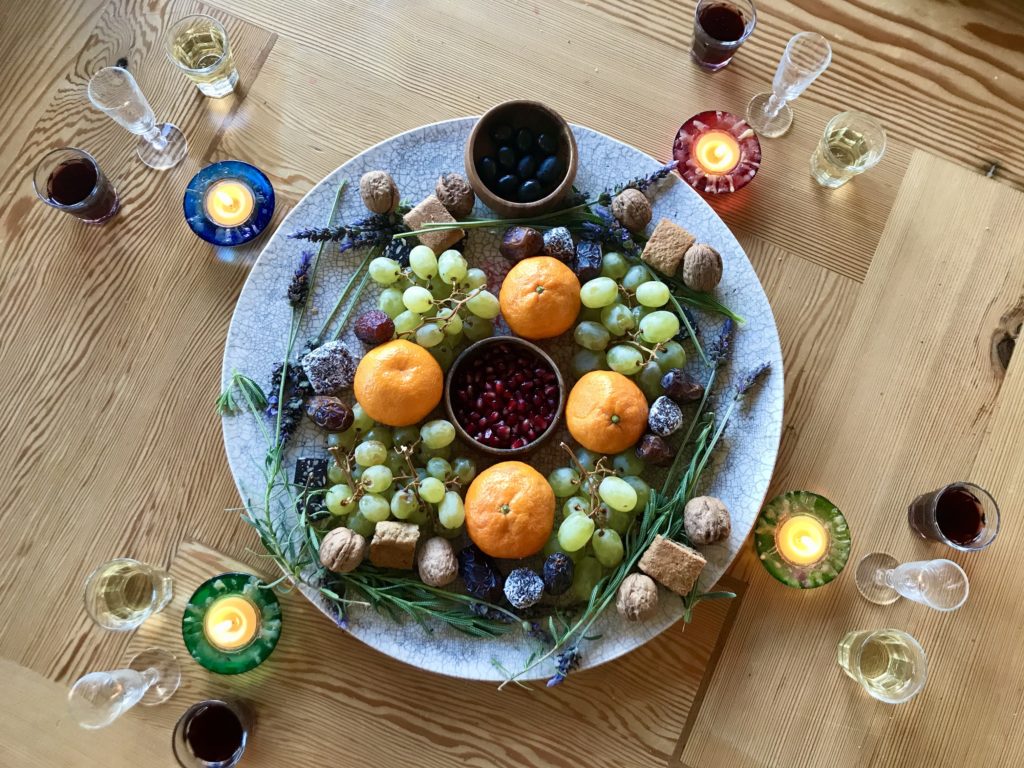February 5, 2023
Festivals are universally-shared celebrations of life, and they are as diverse as the people of our beautiful planet. In celebration of the festival traditions that bring us together, we would like to share with you the experiences of several members of our LifeWays family this year, all from different walks of life and spiritual traditions. Today, our friend Yael Raff Peskin writes about the Jewish festival of Tu b’Shvat.
Yael interweaves her Jewish observance with Zen mindfulness practice and the nature-based teachings of Waldorf education. In KULANU (All of Us), Yael created a year-round, nature-based program for infants-preschoolers, sharing Jewish tradition in an outdoor Waldorf-inspired setting. She is the mother of three adult children and grandmother to one of the sweetest people she has ever met!
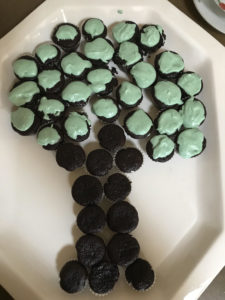
Tu b’Shvat: The Birthday of the Trees
A Jewish Festival Celebration
Each month on the Hebrew calendar begins on the new moon, and there are four “New Year” celebrations on the Jewish Festival Calendar.
In the spring, on the new moon of the month of Nisan, we celebrate the New Year of Festivals and begin counting the months again (Nisan is the first month on the Hebrew calendar). The first of Nisan also begins the New Year of Kings and Queens.
In the summer, on the new moon of Elul, we celebrate the New Year of Animals.
In the autumn, the new moon of the month of Tishrei (the seventh month of the year) marks Rosh HaShanah, literally the “Head of the Year,” and ushers in the new calendar year. Currently, we are in the year 5783 on the Hebrew calendar.
In the winter, on the full moon of the month of Sh’vat, we celebrate Tu b’Shvat (literally: the 15th of Sh’vat), the beloved festival marking the New Year of the Trees … which we will welcome this week!
Historical Roots and Branches
The roots of Tu b’Shvat began in Biblical times as a social construct to determine when community taxes were assessed based on the growth of trees. In the 16th century, Tu b’Shvat evolved in the Kabbalistic/Mystical Tradition, inviting us to experience our spiritual connection with the trees and fruits in the Garden of Eden. They developed a ceremonial “seder” where red and white wines (or grape juices) were mixed, and fruits from the land of Israel were consumed in creative ritual ways to honor the gifts of each season in the natural world and in our lives. When the land of Israel became a state, Tu b’Shvat evolved into an Israeli Arbor Day where the tradition of planting trees began. In modern times, with growing awareness and ecological concerns about the wellbeing of our planet, Tu b’Shvat has become an educational opportunity to bring repair (tikkun olam) and healing to our environment.
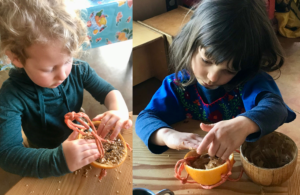
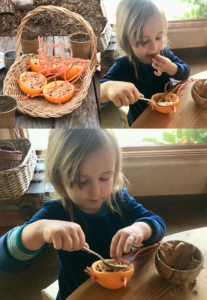
KULANU Playgarden Traditions
At KULANU Playgarden, we have celebrated Tu b’Shvat –also known as the Birthday of the Trees– in many ways. The children delight in making Tub’Shvat muffins and cupcakes to celebrate the trees’ birthday and, also, in making gifts for the trees to adorn their branches. To make birdfeeders, they have scooped out oranges, filled them with peanut butter and then topped them with birdseed and tied on twine to hang them up.
Years ago, we began the KULANU tradition of each child planting a fruit tree of their choice on Tu b’Shvat.
This tree then becomes their responsibility to take care of and watch over. Over the years, the trees have grown tall enough to watch over the children! Our property now is covered with apple trees, plum trees, peach trees, pomegranate trees, fig trees, citrus trees (orange, tangerine, lemon, lime), olive trees, an Asian pear tree, a cherry tree, an apricot tree, a crabapple tree, a pineapple guava tree, as well as kiwis and grapes … a children’s orchard of sweetness.
We have also had family Tu b’Shvat seders with lively ceremonies celebrating the bounty of fresh fruits that connects us with the trees of our own land and also the land of Israel where seven species are particularly treasured: Pomegranates, Figs, Date Palm, Olives, Wheat, Barley and Grapes. (See 7 Species Muffin Recipe)
Tu B’Shvat Seder
Most people are familiar with the Passover seder where the Israelites’ exodus from Egypt and celebration of freedom is recalled and embodied through storytelling, singing, and the eating of special foods. In recent years, Tu b’Shvat seders have been popping up throughout the land to honor the wisdom of the trees and the many gifts they offer to us. In Hebrew, “seder” means “order” and, at a Tu b’Shvat seder, fruits and nuts are eaten in a particular order as we move through lifting up the gifts of each season, the four elements, the four worlds of the Jewish mystical tradition (which also correspond to Rudolf Steiner’s four bodies) … and many other ways people creatively interweave teachings and offerings.
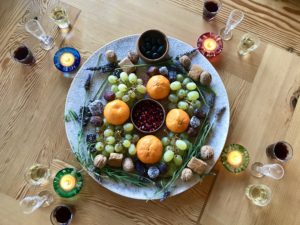
There are so many different ways to expand upon the core teachings, but the following describes what we’ve done at KULANU Playgarden.
We begin with the Physical World (Assiya), honoring our bodies, our land, the natural world and our connection with the element of the earth which inspires grounded action. We immerse ourselves in the season of winter, represented by a glass of white wine or grape juice. Eating fruits and nuts that have hard outer skins or shells, but are soft and edible on the inside (e.g. oranges, pomegranates, walnuts) invites us to reflect on ways we are protected and guarded by our own skin and outer shells.
We then move into the World of Emotion/Formation (Yetzirah) and the element of water, adding a bit of red wine or grape juice to the cup of white as we immerse ourselves in the season of spring and partake of fruits with a soft outer skin but a hard pit in the middle (e.g. olives, peaches, plums), reflecting on our own vulnerability and inner strength
Next is the World of the Intellect and Imagination (B’riya) and the element of air. now adding a bit of white to a cup of red wine or grape juice as we delight in the gifts of summer. At this time we consume fruits that are completely edible inside and out (e.g. grapes, apples, figs), reflecting on ways we can be fully ourselves out in the world.
The final realm is the World of the Spirit (Atzilut) and the element of fire. We drink a glass of pure red wine or grape juice and delight in the fragrances of fresh herbs and spices. Nothing is eaten as we reflect on the essence of our own being and what is essential in the world.
Here you may find the story of Honi the Circle Maker, which is traditionally told during the Tu b’Shvat seder.
Tu b’Shvat Sameackh! (Happy Birthday to the Trees)
As the late winter rains pour down and soak the earth, may we celebrate our beloved trees of every kind and all of the ways they help nourish and sustain our lives … and may we together with all beings be blessed.

With winter joy,
Yael Raff Peskin
